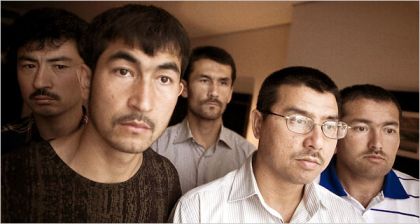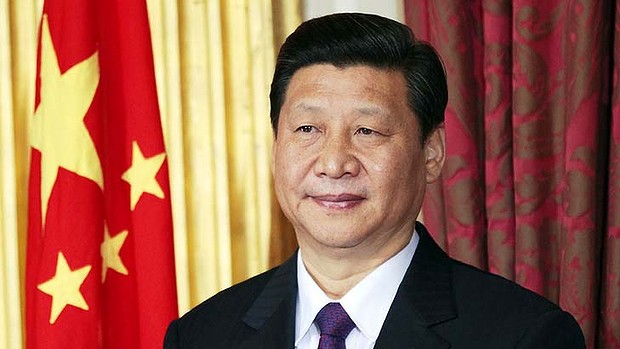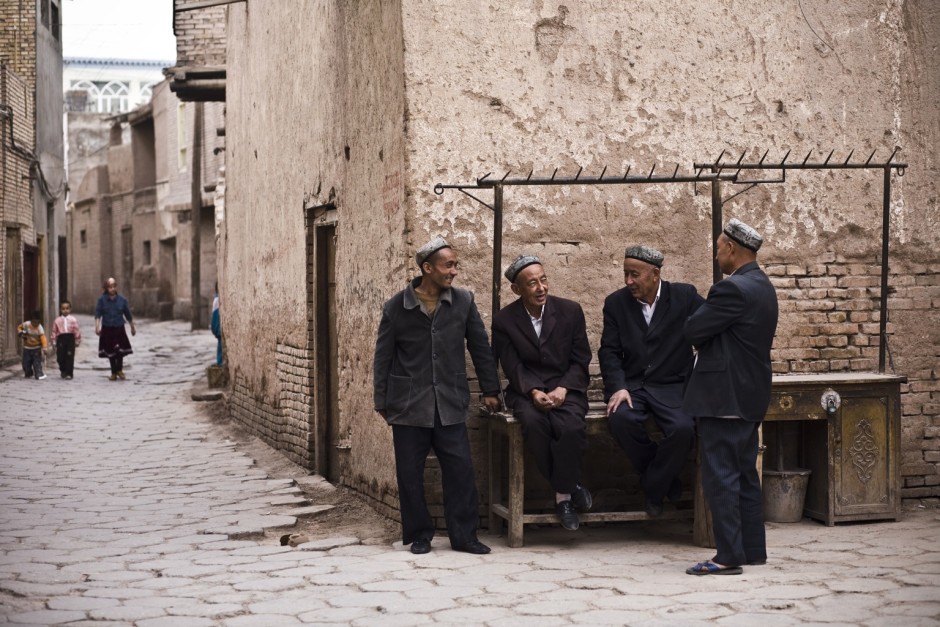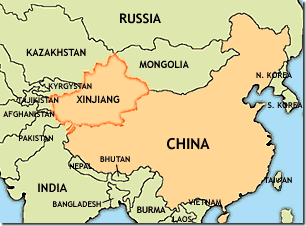In 1991, when the Soviet Union fell apart, the five central Asian republics of Kazakhstan, Kyrgyzstan, Tajikistan, Turkmenistan, and Uzbekistan, sometimes called the “five stans,” became sovereign states.
They were all part of a largely Turkic Muslim civilization that had flourished in the region for hundreds of years, until conquered by tsarist Russia in the 18th-19th centuries. They had acquired their current borders as Soviet republics.
However, there is a sixth “stan” that has proved less fortunate, because it ended up as part of China rather than Russia.
The Xinjiang Uighur Autonomous Region in the far west of the People’s Republic of China is more than 1.6 million square kilometres in area and borders Russia, Mongolia, Pakistan, India, and the former Soviet republics of Kazakhstan, Kyrgyzstan, and Tajikistan. An arid region that historically was called East Turkestan, it has oil reserves and is China’s largest natural gas-producing region.
The region is the historic homeland of the Uighurs, a Turkic Muslim people. While the Russians were conquering western Turkestan, the Chinese Empire gained control over eastern Turkestan as the culmination of a long struggle that began in the 17th century.
The Uighurs, not pleased to find themselves subservient to Imperial Han Chinese rule from far-off Beijing, rebelled in 1864 in various Xinjiang cities. They were quashed with incredible cruelty.
In the 1930s, the weak Chinese Republic faced another rebellion, when a short-lived Islamic Republic of East Turkestan was declared in 1933. It was crushed a year later.
In 1944, as China was fighting Japan, factions within Xinjiang again declared independence, this time under the auspices of the Soviet Union, and created the second East Turkistan Republic. But in 1949, the Chinese Communist Party took over the territory and declared it a Chinese province. In October 1955, Xinjiang became classified as an autonomous region.

In recent decades, as the area developed economically, Han Chinese moved in and took the better jobs and housing. Around 90 percent of Xinjiang’s population were Uighurs in 1949; now it is estimated that they make up only about 45 per cent of its 22 million people, though they remain a majority in western Xinjiang.
This has sparked resentment and calls for independence. In the 1990s, separatist groups in Xinjiang began frequent attacks against the Chinese government. The most prominent of these groups is the East Turkestan Islamic Movement, founded in 1993. Other factions want to create a secular Uighurstan state.
In July 2009, ethnic tension between the Han Chinese and Uighurs led to severe riots in the capital city of Urumqi. According to Chinese state media, almost 200 people were killed, and more than 800 injured. The riots were reportedly sparked by a Uighur protest over the ethnically motivated killing of two Uighur workers in the southern Chinese province of Guangdong.
There has been an upsurge in terrorism since then. In June 2012, six ethnic Uighur men tried to hijack an aircraft heading to Urumqi, but failed after passengers and crew resisted and restrained the hijackers. A year later, 27 people were killed in riots; 17 of them were killed by rioters, while the other 10 people were alleged assailants who were shot dead by police in the township of Lukqun.
At least 29 people were killed in early March in a railway station attack in the Chinese city of Kunming, the capital of Yunnan province. It was an organized, premeditated terrorist attack by knife-wielding assailants, according to the Chinese Xinhua news agency.
In late May, attackers in two cars ploughed through shoppers while setting off explosives at a busy street market in Urumqi, killing 39 people. The Xinjiang regional government said in a statement that it was “a serious violent terrorist incident of a particularly vile nature.” At least 180 people have been killed in attacks across China over the past year.
In response, China’s president Xi Jinping has called for moving more Uighurs to inland areas of China in order “to enhance mutual understanding among different ethnic groups and boost ties between them.”

World attention has tended to focus on another oppressed ethnic group under Chinese rule, the Tibetans. Their spiritual and political leader, the Dalai Lama, has generated international awareness for their cause. But the plight of the Uighurs should command equal attention.
Henry Srebrnik is a professor of political science at the University of Prince Edward Island.

| Send |

